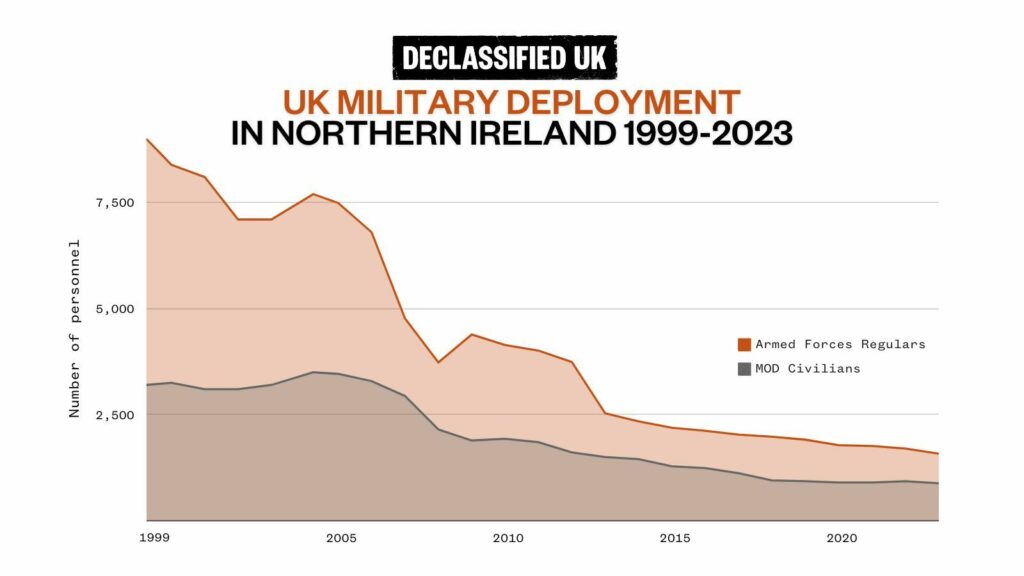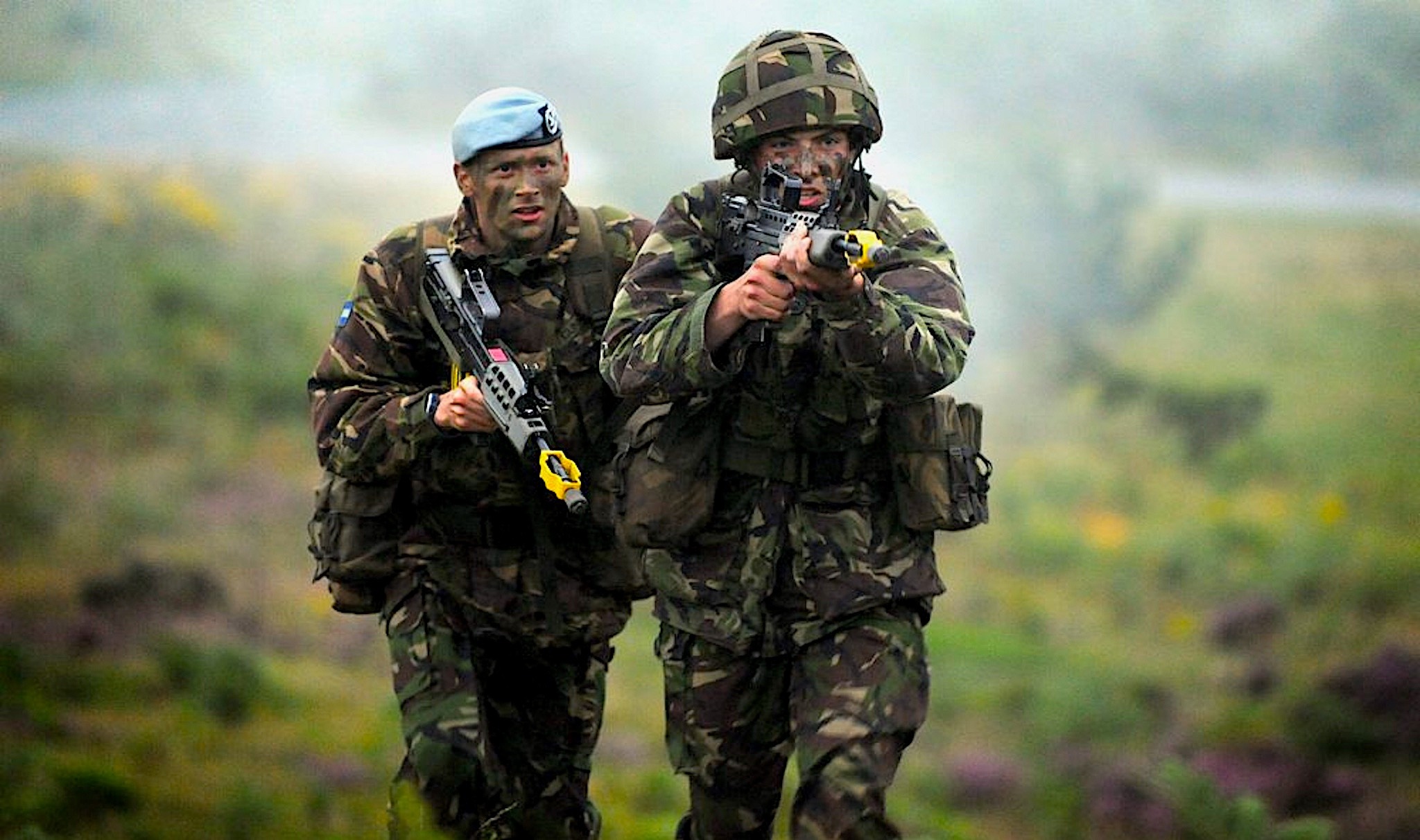The number of British soldiers stationed in Northern Ireland has dropped by 82% since the Good Friday Agreement was signed in 1998, new figures show.
UK troops in the territory in 1999, the first full year after the accords, numbered 9,000. Last year the figure had fallen to just 1,580.
The number of Ministry of Defence (MoD) civilian personnel in Northern Ireland has fallen from 3,200 to 880 in the same period.
Figures show that levels have fallen consistently in the 25 years since the historic peace deal was signed as violence has subsided.
The biggest drops in the period came in 2006-7 when UK soldier deployment levels fell 30% in one year—and 2012-13 when they dropped by 32%.
But the latest details from the UK military show that it still owns and operates at least 55 sites in Northern Ireland, which are spread across the territory. The MoD also owns more than 900 family accommodation facilities for its staff.
However, the MoD added that “there are a small number of locations that are not included [in published details] for security reasons”.
The 1,580 UK soldiers currently stationed in Northern Ireland are spread across four of the territory’s 10 local authorities, compromising Belfast and the three surrounding areas.
The majority of them, 850, are based in Lisburn and Castlereagh, the local authority south of Belfast. A third of the 880 MoD civilian personnel are also stationed there.
Antrim and Newtownabbey, north of Belfast, hosts 410 British soldiers, while to its east, Ards and North Down hosts 290. Belfast itself hosts 20.

Intelligence stays
The vanishing UK military presence in Northern Ireland comes as Sinn Féin’s Michelle O’Neill became the territory’s First Minister in February.
O’Neill is the first republican to ever hold the position after the May 2022 assembly election when Sinn Féin overtook the Democratic Unionist Party (DUP) as the biggest party.
Sinn Féin, which wants a reunified Ireland, is also leading polls south of the border in the Republic of Ireland with elections due in 2025.
The British military was a key player in the Troubles in Northern Ireland, which often involved “collusion” with loyalist paramilitaries.
Britain’s domestic security service, MI5, which had a huge presence in the territory during the Troubles, is still in Northern Ireland. But the level of the UK intelligence presence in the territory is secret, although it does not appear to have fallen.
In 2007, as the British soldier presence dropped by 30% from the previous year, MI5 opened a new headquarters at Palace Barracks just outside Belfast. MI5 said the building opened so the agency could take over responsibility for national security intelligence work from the Police Service of Northern Ireland (PSNI).
John Finucane, Sinn Féin MP for Belfast North, told Declassified: “As far as UK intelligence is concerned, you would be aware of them from the news, whenever there are high-profile investigations or arrests into dissident republicanism, they have ultimate control over that. So they are still here and they are still active.”
He added: “But as for the British Army, thankfully they are not on the streets anymore. And when you explain what it was like, people think you’re exaggerating when you describe, for example, what it was like getting the bus into town, being stopped numerous times and searched and all that sort of stuff. But that’s a matter of history now.”
The DUP did not respond to a request for comment.


